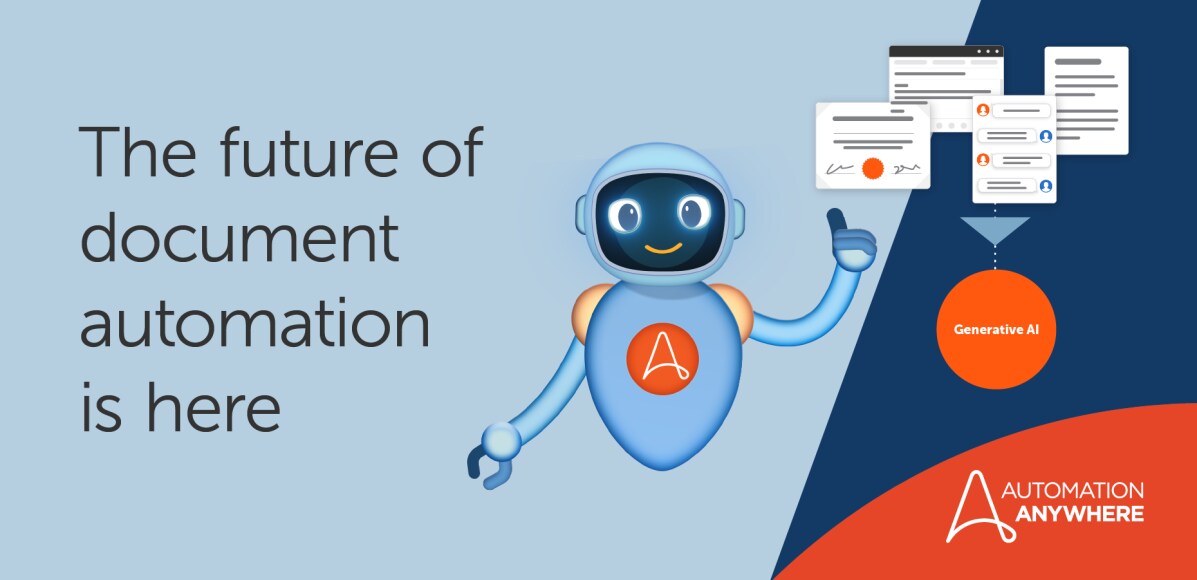Share this:

Document processing has long been a labor-intensive and time-consuming task for organizations, requiring manual effort to identify documents, route them to the right person, and extract relevant information. For decades we have relied on optical character recognition (OCR) to convert images into text and intelligent document processing (IDP) solutions with varying degrees of complexity to extract relevant fields from that OCR text.
More recently, machine learning (ML) algorithms are being leveraged to improve upon traditional data extraction methods such as Zonal OCR and rules-based key/value pair extraction by training models to extract data from structured, semi-structured, and unstructured documents. However, these traditional methods often required training of domain-specific ML models and extensive manual labeling of large sets of training data, making them time-consuming and resource-intensive to maintain and build.
The emergence of generative AI and LLMs
In the ever-evolving landscape of IDP, recent advancements in AI technologies have brought about transformative change in the way organizations develop and maintain their document extraction solutions. Over the past twelve months, the market has seen unprecedented change driven by the emergence of generative AI and the integration of large language models (LLMs). These innovations have not only revolutionized the market, they have also opened up new possibilities for automating documents that previously could not be automated.
“Generative AI is the single most important change in the long history of IDP,” stated Dan Lucarini, senior analyst at Deep Analysis and noted IDP market expert. “For the first time, a computer can classify documents and extract data without human intervention, training samples, or prior knowledge. In AI terms this is known as zero-shot learning; in other words, the document is recognized with no prior encounter or training.”
The introduction of LLMs, such as OpenAI’s GPT series and Google’s Vertex AI, has opened a whole new world of possibilities for automating document data entry. These models are trained on vast amounts of data, enabling them to grasp not only individual data elements but also contextual nuances, making them adept at handling complex unstructured documents. They can also extract information from a wide range of documents without the need for upfront training or defining rules.
Leveraging traditional methods
While LLMs are revolutionizing the way organizations automate document processing, traditional methods such as Zonal OCR, key/value pair extraction, and machine learning are still the best tools for extracting data from structured and semi-structured documents. These tried and true extraction technologies can be completed by LLMs to supplement semi-strutted document extraction methods and replace the need to build models for unstructured documents.
"We are often asked whether foundational LLMs such as GPT-4 will replace machine learning models that were fine-tuned to a data set,” said Lucarini. “The answer is no, not anytime soon. Foundational LLMs hallucinate too often to be reliable for a typical IDP application that requires 100% data accuracy. They're also far too expensive for reading a large batch of documents. Discriminative ML models are still the best choice for accuracy and cost."
Maximizing efficiency with generative AI
Generative AI can still be a time-saving copilot for an IDP product. For example, end users with no knowledge of regular expressions or coding can create and fine-tune a new document model using generative AI prompts. It can also accelerate the training phase by suggesting labels from a document. As users delve deeper, they are continually discovering innovative applications for generative AI within IDP, perpetually expanding its utility and impact.
The recent advancements of generative AI and LLMs have been nothing short of revolutionary. They have complimented and, at the same time, disrupted the market and opened up new possibilities for automating document-intensive business processes. By leveraging these innovations integrated with traditional extraction methods, organizations can streamline their document workflows and unlock new levels of efficiency and productivity.
About Michael Guidry

Michael is the general manager of intelligent document processing strategy and operations at Automation Anywhere.
Subscribe via EmailView All Posts LinkedIn






